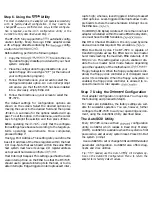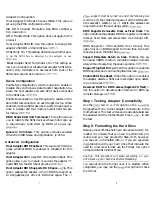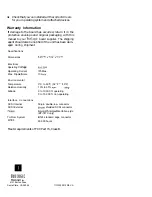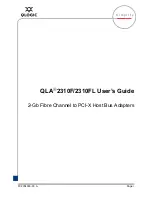
Step 6. Using the
Utility
For most installations, the adapter will operate successfully
with its factory-default configuration. It may need to be
changed
if
conflicts occur.
further configura-
tion is required, use the
configuration utility or the
AutoSCSl utility described under Step 7.
The BT-747C fully supports the
automatic config-
uration facility. Every
EISA adapter comes
with a floppy diskette containing the
config-
uration file
Before starting, perform the following steps:
Copy the
file onto the con-
figuration floppy diskette provided with your host
system computer.
Place the configuration floppy diskette into your
system floppy drive and type “CF” (or the name of
your configuration program).
Follow the directions on your screen to select the
configure computer option. An
Auto Added
prompt
will advise you that the BT-747C has been installed
into a previously empty EISA slot.
Follow the directions on your screen to select the
BT-747C.
The default settings for configuration options are
shown on the screen. Select the desired options by
moving the cursor to the desired field and then press
<Enter>. A submenu for the options selected will ap-
pear. To set the option in the submenu, use the cursor
keys to highlight the selection and then press <Enter>.
Before operating the
verify that the configura-
tion settings have been set according to the target sys-
tem’s operating requirements. Once completed,
proceed to Step 7.
Host
Port Address. This setting lets you define the
base I/O address of the three registers within the host
I/O map. Note that each board within the same EISA
host system must have its unique I/O register address-
es to prevent hardware conflicts.
Host Interrupt Request. This setting specifies the hard-
ware interrupt line on the EISA bus that the BT-747C
should use to generate interrupts to the host, or to dis-
able interrupts. Edge-triggered interrupts assert inter-
rupts high; whereas, level-triggered interrupts assert
interrupts low. Level-triggered interrupts allow multi-
ple boards to share the same hardware interrupt line on
the EISA bus.
Host BIOS (16K Bytes) Address. If more than one host
adapter is installed within the same EISA host system,
one must have the BIOS enabled.
ISA DMA Channel Emulation. It is only used by some
device drivers that require DMA emulation.
EISA Bus Burst Cycles. The BT-747C is capable of
transferring data across the EISA bus in bus master
burst mode reaching the maximum EISA data rate of 33
This setting allows you to enable or dis-
able the bus master burst mode feature depending
upon the capability of the motherboard.
Floppy Subsystem. When the floppy subsystem is dis-
abled, the floppy disk controller will disregard read
and write commands. When the floppy subsystem is
enabled, the floppy disk controller is allowed to re-
spond to read or write requests.
Step 7. Using the
Configuration
Host adapter configuration is optional. You may skip
the following and proceed to Step 8.
For most card installations, the factory settings are suit-
able for successful operation. You can, however, further
configure the BT-747C to suit your operating environ-
ment, using the AutoSCSI Utility described below.
The AutoSCSl Utility
Every BT-747C comes with an
configuration
utility, AutoSCSI, which resides in Read Only Memory
(ROM). AutoSCSI is available when the system is first
powered up and at every system reset. Press Ctrl-B at
the system prompt.
Use AutoSCSI to set or change SCSI and BIOS-related
parameter configuration. AutoSCSI also offers diag-
nostic and disk utilities.
Tip:
needed, use the Auto
All Adapters op-
tion on the AutoSCSl Configuration Menu to return the
adapter to its factory default values.

























